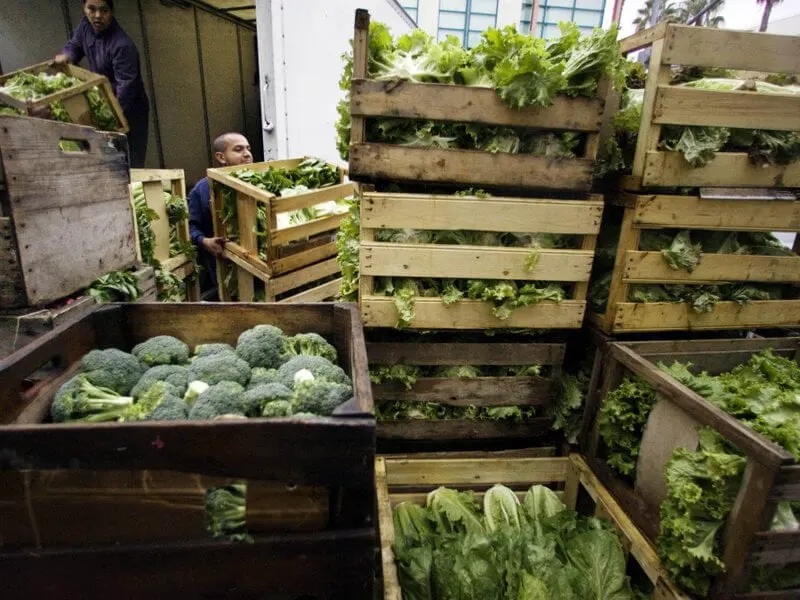Limited consumer demand could hinder Europe’s plans to reach 25% organic food production
Limited consumer demand could hinder Europe’s plans to reach 25% organic food production


EU plans to make over 25 percent of Europe’s farmland organic by 2030 will depend on changes in consumption patterns, DG AGRI deputy chief [Michael] Scannell told the agriculture committee.
Cost of living: Scannell said the Commission was worried about increased costs to farmers — from feed, freight, transport and Brexit red tape — and also from the new environmental goals. “With the increased sustainable targets coming onstream under the Farm to Fork (F2F) and Green Deal, it’s extremely important that these costs don’t only fall only on farmers,” Scannell said. The issue had been “raised also in the context of organics,” he added.
Do the math: The soon-to-be-published EU Organic Action Plan “acknowledges and accepts that if we are to meet the F2F organic target … we need to see a response also on the consumption side of the equation,” Scannell said.
Supply and demand: Demand for organic food in Europe is growing strongly, with a 70 percent rise in Europe’s organic area over the last decade. But market analysis suggests that organics will still only reach an EU market share of 15-18 percent by 2030 at current rates.
Getting the promotion: Farm lobbies argue that market demand rather than EU targets should be a primary driver for increasing organic output, while Commission plans to use around €49 million for organics promotion irked some lawmakers.
Read the original post (behind paywall)

 | Videos | More... |

Video: Nuclear energy will destroy us? Global warming is an existential threat? Chemicals are massacring bees? Donate to the Green Industrial Complex!
 | Bees & Pollinators | More... |

GLP podcast: Science journalism is a mess. Here’s how to fix it

Mosquito massacre: Can we safely tackle malaria with a CRISPR gene drive?

Are we facing an ‘Insect Apocalypse’ caused by ‘intensive, industrial’ farming and agricultural chemicals? The media say yes; Science says ‘no’
 | Infographics | More... |

Infographic: Global regulatory and health research agencies on whether glyphosate causes cancer
 | GMO FAQs | More... |

Why is there controversy over GMO foods but not GMO drugs?

How are GMOs labeled around the world?

How does genetic engineering differ from conventional breeding?
 | GLP Profiles | More... |

Alex Jones: Right-wing conspiracy theorist stokes fear of GMOs, pesticides to sell ‘health supplements’




 Trust issues: What happens when therapists use ChatGPT?
Trust issues: What happens when therapists use ChatGPT? Fighting deforestation with CO2: Biotechnology breakthrough creates sustainable palm oil alternative for cosmetics
Fighting deforestation with CO2: Biotechnology breakthrough creates sustainable palm oil alternative for cosmetics California, Washington, Oregon forge immunization alliance to safeguard vaccine access against federal undermining
California, Washington, Oregon forge immunization alliance to safeguard vaccine access against federal undermining Viewpoint — Fact checking MAHA mythmakers: How wellness influencers and RFK, Jr. undermine American science and health
Viewpoint — Fact checking MAHA mythmakers: How wellness influencers and RFK, Jr. undermine American science and health 30-year-old tomato line shows genetic resistance to devastating virus
30-year-old tomato line shows genetic resistance to devastating virus Viewpoint: Video — Big Solar is gobbling up productive agricultural land and hurting farmers yet providing little energy or sustainabilty gains
Viewpoint: Video — Big Solar is gobbling up productive agricultural land and hurting farmers yet providing little energy or sustainabilty gains The free-range chicken dilemma: Better for birds, but with substantial costs
The free-range chicken dilemma: Better for birds, but with substantial costs ‘You have to treat the brain first’: Rethinking chronic pain with Sanjay Gupta
‘You have to treat the brain first’: Rethinking chronic pain with Sanjay Gupta
